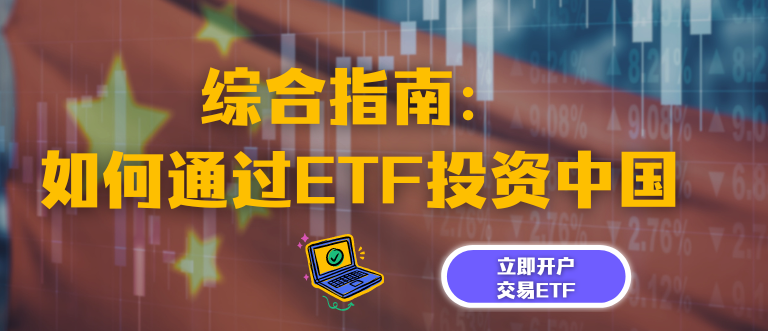Exchange Control
Table of Contents
Exchange Control
In economics, the term “Exchange Control” holds significant importance for businesses and individuals engaging in international trade and finance. Exchange control plays a crucial role in maintaining economic stability and safeguarding a nation’s financial interests. By understanding the methods, objectives, and examples of exchange control, businesses and individuals can navigate the complex landscape of international finance with greater awareness and compliance. This article aims to shed light on the concept, methods, objectives, and examples of exchange control catering to the financial communities.
What is Exchange Control?
Exchange control refers to the regulatory measures imposed by a government to manage and control the movement of foreign currency within its borders. It is a set of rules and policies designed to ensure stability in the foreign exchange market and safeguard a nation’s economic interests.
This regulatory framework ensures stability in the foreign exchange market, controls inflation and protects a nation’s economic interests. In simpler terms, exchange control involves monitoring and regulating foreign currency buying and selling, aiming to maintain a balanced and stable economic environment.
Governments may employ various methods to enact exchange control, such as fixed exchange rates, capital controls, and trade restrictions. Fixed exchange rates peg a nation’s currency to another, fostering stability in international transactions. Capital controls restrict the movement of funds across borders, mitigating risks associated with excessive capital flight or speculative activities. Trade restrictions, on the other hand, involve regulating imports and exports to sustain a balanced payment system.
Understanding Exchange Control
Exchange control involves monitoring and regulating the buying and selling of foreign currencies, restricting the flow of capital across borders. Governments implement these controls to stabilise their currency, manage inflation, and safeguard their foreign exchange reserves.
This financial regulatory mechanism refers to the measures adopted by governments to monitor and manage the movement of foreign currency within their jurisdictions. The primary goal is fostering economic stability, controlling inflation, and safeguarding national financial interests.
Understanding exchange control is crucial for businesses and individuals in international trade and finance. This comprehension empowers them to navigate the intricacies of foreign exchange regulations, ensuring compliance and facilitating seamless financial transactions in an increasingly interconnected global economy.
Methods of Exchange Control
Various methods are employed to implement exchange control, including fixed exchange rates, capital controls, and trade restrictions.
Fixed exchange rates: Under this method, a country pegs its currency to another, ensuring a stable and predictable exchange rate. This approach provides businesses and individuals with a sense of certainty when engaging in international transactions, reducing currency-related risks
Capital controls: Capital controls involve regulations that restrict the movement of funds across borders, preventing excessive capital flight or speculative activities. These measures are implemented to maintain economic stability, manage inflation, and safeguard a nation’s financial interests.
Trade restrictions: Exchange control can be exerted through trade restrictions, which involve regulating imports and exports to achieve a balance of payments. Governments may impose tariffs, quotas, or other barriers to control the outflow and inflow of goods and services.
Foreign Exchange Reserves Management: Central banks may indirectly use interest rate policies to influence exchange rates. By adjusting interest rates, governments can attract or discourage foreign capital, impacting the demand for their currency in the foreign exchange market.
Objective of Exchange Control
The primary objective of exchange control is to uphold economic stability and safeguard a nation’s financial well-being. This regulatory mechanism is implemented by governments to manage the movement of foreign currency within borders, aiming to achieve a delicate balance in economic factors. By meticulously overseeing the buying and selling of foreign currencies, exchange control contributes to controlling inflation rates, stabilising interest rates, and ensuring the availability of foreign exchange reserves.
Exchange control acts as a safeguard, protecting these nations from potential economic volatility and external threats. By monitoring the flow of foreign currency, authorities can prevent excessive fluctuations in exchange rates and maintain a competitive trade environment. Additionally, exchange control plays a crucial role in supporting economic growth, fostering a climate conducive to international trade, and attracting foreign investment.
Ultimately, the objective of exchange control is rooted in the broader goals of economic prosperity and financial security. It serves as a strategic tool that empowers governments to navigate the complexities of the global financial landscape, ensuring resilience and sustainability for the benefit of businesses and individual
Example of Exchange Control
A notable example of exchange control is the Monetary Authority of Singapore’s (MAS) implementation of the Singapore Dollar (SGD) exchange rate policy. MAS uses a managed float system, allowing the SGD to fluctuate within a specified band. This approach helps Singapore maintain price stability and support economic growth.
The managed float approach serves as a pragmatic measure to balance economic stability and competitiveness. MAS intervenes in the foreign exchange market when necessary to prevent excessive volatility and maintain price stability. By strategically adjusting the SGD’s value, Singapore can safeguard its export competitiveness and foster economic growth.
Singapore’s managed float system showcases a nuanced and adaptive approach, allowing businesses and individuals to comprehend the impact of such policies on international trade and financial transactions within these dynamic economic landscapes.
Frequently Asked Questions
Exchange control can take various forms, including fixed exchange rates, capital controls, and trade restrictions. Each type serves specific purposes in managing a nation’s economic stability.
Exchange control documents are official forms or paperwork required by authorities to monitor and regulate foreign exchange transactions. These documents facilitate compliance with exchange control regulations.
An exchange control copy is a duplicate of a document submitted for exchange control purposes. It serves as proof of compliance with regulatory requirements and helps authorities track and manage foreign exchange transactions.
Exchange controls are regulatory measures implemented by governments to manage the movement of foreign currency, ensuring economic stability, controlling inflation, and protecting a nation’s financial interests.
Despite their benefits, exchange controls can pose challenges. These constraints can impede international trade by introducing barriers and restrictions, limiting the flexibility of businesses operating in a globalised market. Additionally, exchange controls may hinder investment opportunities, inhibiting the free flow of capital and potentially impacting economic growth. Striking a balance between regulatory objectives and facilitating a conducive environment for international commerce remains a delicate challenge
Related Terms
- Trailing Stops
- Relevant Cost
- Dow Theory
- Hyperdeflation
- Hope Credit
- Futures contracts
- Human capital
- Subrogation
- Qualifying Annuity
- Strategic Alliance
- Probate Court
- Procurement
- Holding company
- Harmonic mean
- Income protection insurance
- Trailing Stops
- Relevant Cost
- Dow Theory
- Hyperdeflation
- Hope Credit
- Futures contracts
- Human capital
- Subrogation
- Qualifying Annuity
- Strategic Alliance
- Probate Court
- Procurement
- Holding company
- Harmonic mean
- Income protection insurance
- Recession
- Savings Ratios
- Pump and dump
- Total Debt Servicing Ratio
- Debt to Asset Ratio
- Liquid Assets to Net Worth Ratio
- Liquidity Ratio
- Personal financial ratios
- T-bills
- Payroll deduction plan
- Operating expenses
- Demand elasticity
- Deferred compensation
- Conflict theory
- Acid-test ratio
- Withholding Tax
- Benchmark index
- Double Taxation Relief
- Debtor Risk
- Securitization
- Yield on Distribution
- Currency Swap
- Overcollateralization
- Efficient Frontier
- Listing Rules
- Green Shoe Options
- Accrued Interest
- Market Order
- Accrued Expenses
- Target Leverage Ratio
- Acceptance Credit
- Balloon Interest
- Abridged Prospectus
- Data Tagging
- Perpetuity
- Hybrid annuity
- Investor fallout
- Intermediated market
- Information-less trades
- Back Months
- Adjusted Futures Price
- Expected maturity date
- Excess spread
- Quantitative tightening
- Accreted Value
- Equity Clawback
- Soft Dollar Broker
- Stagnation
- Replenishment
- Decoupling
- Holding period
- Regression analysis
- Wealth manager
- Financial plan
- Adequacy of coverage
- Actual market
- Credit risk
- Insurance
- Financial independence
- Annual report
- Financial management
- Ageing schedule
- Global indices
- Folio number
- Accrual basis
- Liquidity risk
- Quick Ratio
- Unearned Income
- Sustainability
- Value at Risk
- Vertical Financial Analysis
- Residual maturity
- Operating Margin
- Trust deed
- Leverage
- Profit and Loss Statement
- Junior Market
- Affinity fraud
- Base currency
- Working capital
- Individual Savings Account
- Redemption yield
- Net profit margin
- Fringe benefits
- Fiscal policy
- Escrow
- Externality
- Multi-level marketing
- Joint tenancy
- Liquidity coverage ratio
- Hurdle rate
- Kiddie tax
- Giffen Goods
- Keynesian economics
- EBITA
- Risk Tolerance
- Disbursement
- Bayes’ Theorem
- Amalgamation
- Adverse selection
- Contribution Margin
- Accounting Equation
- Value chain
- Gross Income
- Net present value
- Liability
- Leverage ratio
- Inventory turnover
- Gross margin
- Collateral
- Being Bearish
- Being Bullish
- Commodity
- Exchange rate
- Basis point
- Inception date
- Riskometer
- Trigger Option
- Zeta model
- Racketeering
- Market Indexes
- Short Selling
- Quartile rank
- Defeasance
- Cut-off-time
- Business-to-Consumer
- Bankruptcy
- Acquisition
- Turnover Ratio
- Indexation
- Fiduciary responsibility
- Benchmark
- Pegging
- Illiquidity
- Backwardation
- Backup Withholding
- Buyout
- Beneficial owner
- Contingent deferred sales charge
- Exchange privilege
- Asset allocation
- Maturity distribution
- Letter of Intent
- Emerging Markets
- Consensus Estimate
- Cash Settlement
- Cash Flow
- Capital Lease Obligations
- Book-to-Bill-Ratio
- Capital Gains or Losses
- Balance Sheet
- Capital Lease
Most Popular Terms
Other Terms
- Options expiry
- Adjusted distributed income
- International securities exchanges
- Settlement currency
- Federal funds rate
- Active Tranche
- Convertible Securities
- Synthetic ETF
- Physical ETF
- Initial Public Offering
- Buyback
- Secondary Sharing
- Bookrunner
- Notional amount
- Negative convexity
- Jumbo pools
- Inverse floater
- Forward Swap
- Underwriting risk
- Reinvestment risk
- Final Maturity Date
- Payment Date
- Secondary Market
- Margin Requirement
- Mark-to-market
- Pledged Asset
- Yield Pickup
- Subordinated Debt
- Treasury Stock Method
- Stochastic Oscillator
- Bullet Bonds
- Basket Trade
- Contrarian Strategy
- Notional Value
- Speculation
- Stub
- Trading Volume
- Going Long
- Pink sheet stocks
- Rand cost averaging
- Sustainable investment
- Stop-limit sell order
- Economic Bubble
- Ask Price
- Constant prepayment rate
- Covenants
- Stock symbol
- Companion tranche
- Synthetic replication
- Bourse
Know More about
Tools/Educational Resources
Markets Offered by POEMS
Read the Latest Market Journal

本文旨在为中级外汇交易者提供必要的信息和知识。它将涵盖我们上一篇文章 “五分钟看懂世界上最活跃的市场-外汇差价合约(FX CFD)...

解锁台湾股市的投资潜力!深入了解由强大的技术驱动型经济推动的股票市场,2023 年机械和电气设备将占出口的 69%。在政治稳定、投资者友好的法规和健全的法律框架下,探索台积电和富士康等全球顶级企业。台湾股市值得称赞的历史表现和在国际贸易中的的重要性使其更具吸引力。在这个科技实力雄厚、经济稳定、充满活力的股票市场中,抓住增长机遇!

了解外汇市场 外汇交易市场又称外汇市场,是一个买卖货币的全球性金融市场。它是全世界规模最大、流动性最强的金融市场,每日交易量超过 6 万亿美元。但外汇市场有一个重要却常被忽视的一点,就是它受交易心理的影响。在本文中,我们将探讨外汇市场的复杂性,还有把重点放在交易心理与传统交易策略共同发挥的关键作用...

五分钟看懂世界上最活跃的市场 -外汇差价合约(FX CFD)
外汇交易市场俗称外汇或外汇市场,是全球金融市场的支柱。它是世界上最活跃的市场,2022 年 4 月,全球交易额达到创纪录的每天 7.5 万亿美元[1] 。这个活跃的市场为交易者提供了利用货币价格波动赚取利润的机会。在本文中,我们将解释外汇市场的基本原理,助您了解其投资机制。 什么是外汇? 外汇市场是一个分散的全球市场,世界上所有货币都在这里进行交易...

随着通胀数据趋向 2% 的理想目标,人们普遍乐观地认为,在任何可能的降息之前,市场都不会受到不利影响。以下是美股市场2024年的一些重要事件,投资者在做出投资决策时可以参考留意。

根据《东南亚态势报告:2023》,失业和经济衰退是当前东南亚面临的主要挑战。各国采取了各种政策和措施以恢复经济,尽力摆脱新冠疫情的影响。尽管如此,越南在经济和社会方面展现出了令人满意的复苏迹象,经济增长逐季上升,成为世界经济的亮点之一。虽然全年GDP增速放缓至5.05%,低于政府6.5%的目标,但越南仍然是地区和世界经济增速较快的国家之一。






















